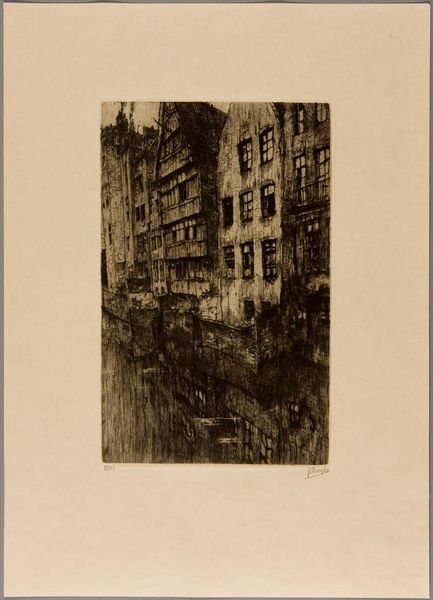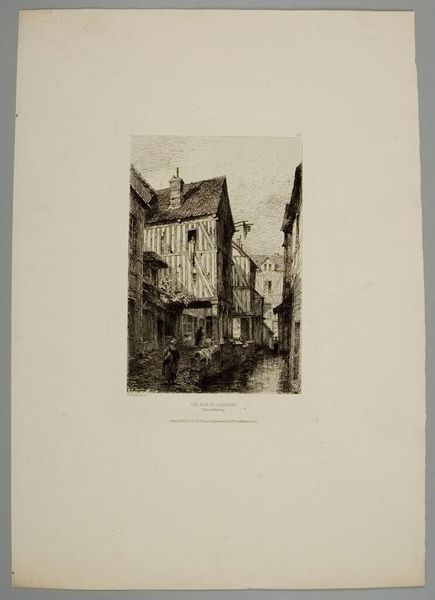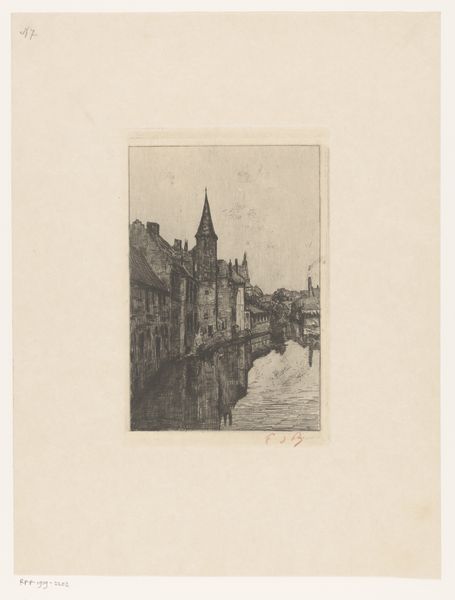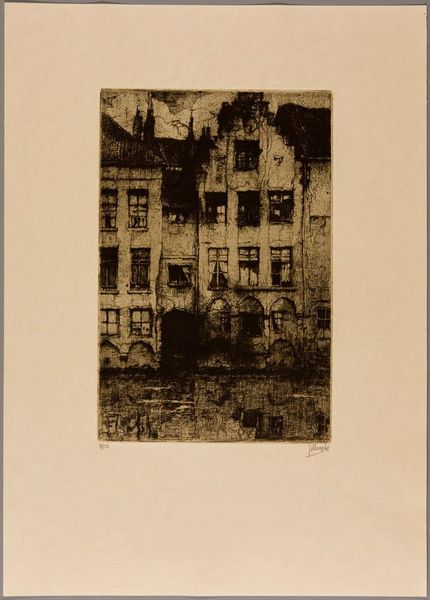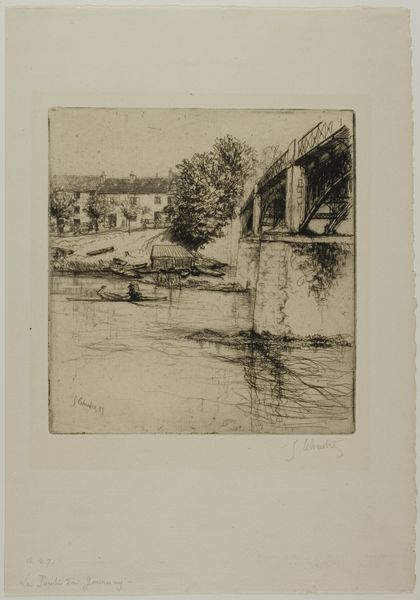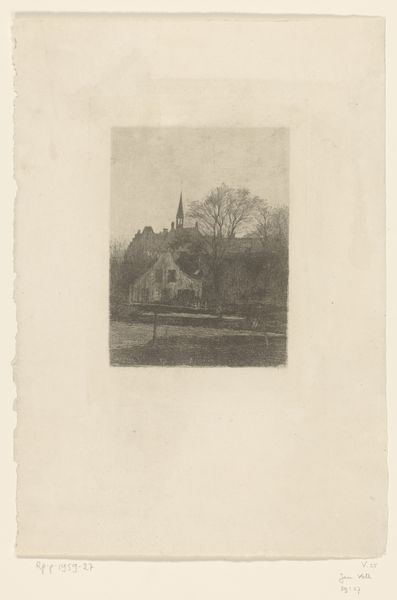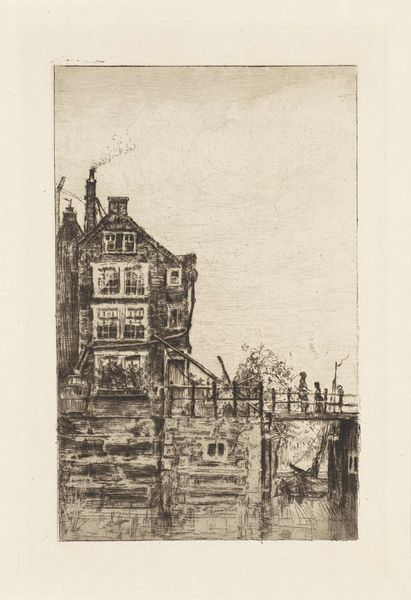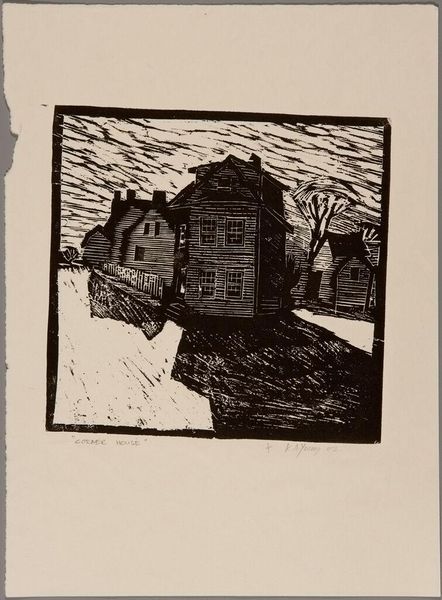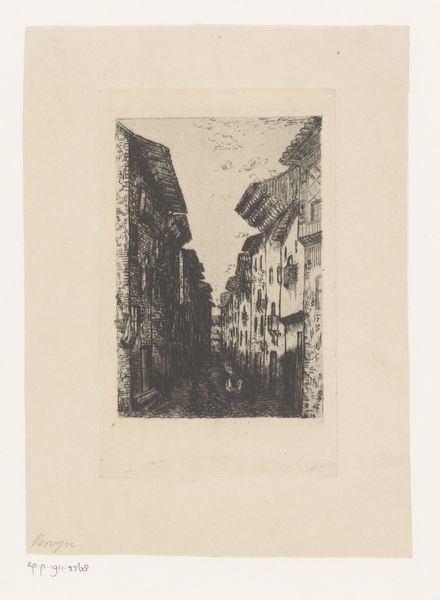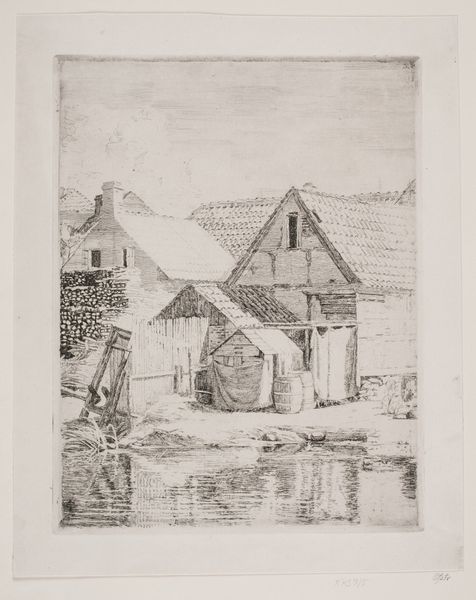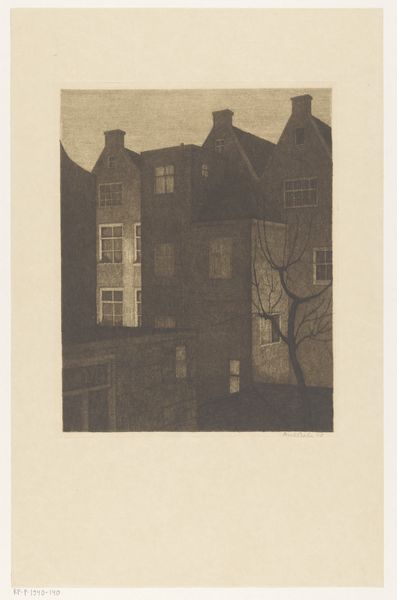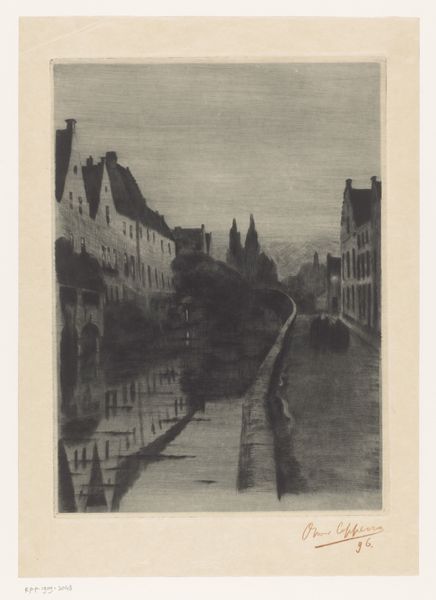
Copyright: CC0 1.0
Editor: Jules de Bruycker's "Station Platform at Liêve" looks like a somber snapshot in time. I'm immediately drawn to the stillness in the water and the weighty darkness of the scene. What sociopolitical narratives do you see at play here? Curator: The density certainly evokes a specific mood. Consider the period when de Bruycker was active. How might anxieties around industrialization and urbanization, and also perhaps a nostalgia for pre-industrial life, manifest in such a scene of quiet decay? Do you think the dark palette is meant to reflect something more than just nighttime? Editor: I hadn't considered the artist's anxieties about industrialization playing a role. I see what you mean; perhaps the darkness represents the unknown future, a feeling of dread tied to progress. Curator: Exactly. And who has access to the platforms of progress, both literally and figuratively? Examining the artist's social context allows us to understand how power structures influence our perspective. Editor: That's a fascinating approach. I'll definitely think more critically about the artist's background when analyzing artwork now.
Comments
No comments
Be the first to comment and join the conversation on the ultimate creative platform.
